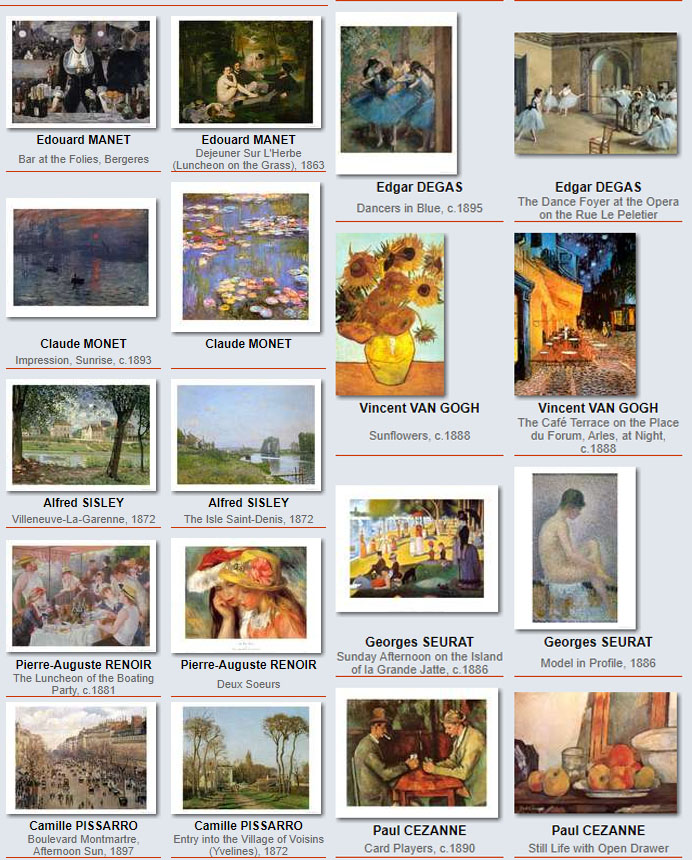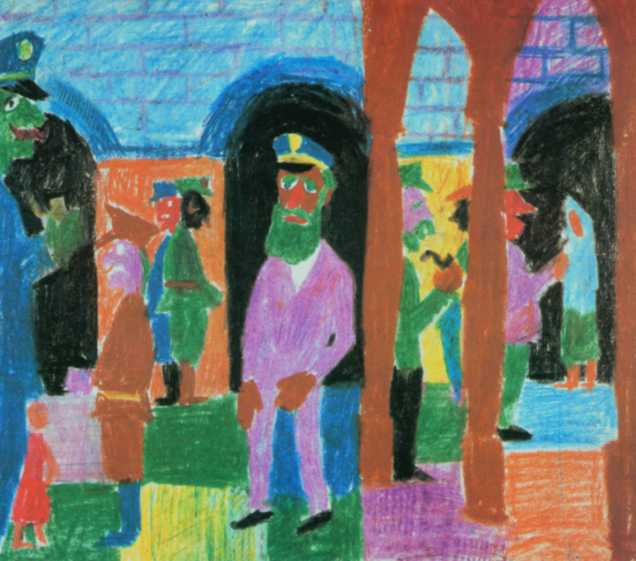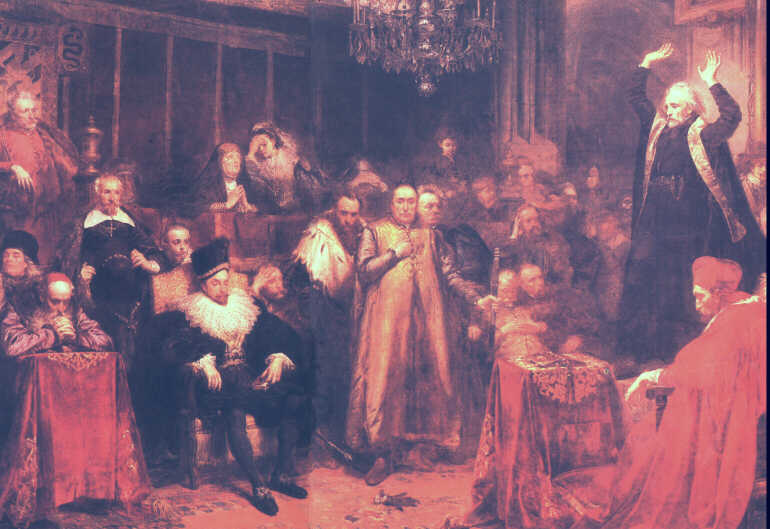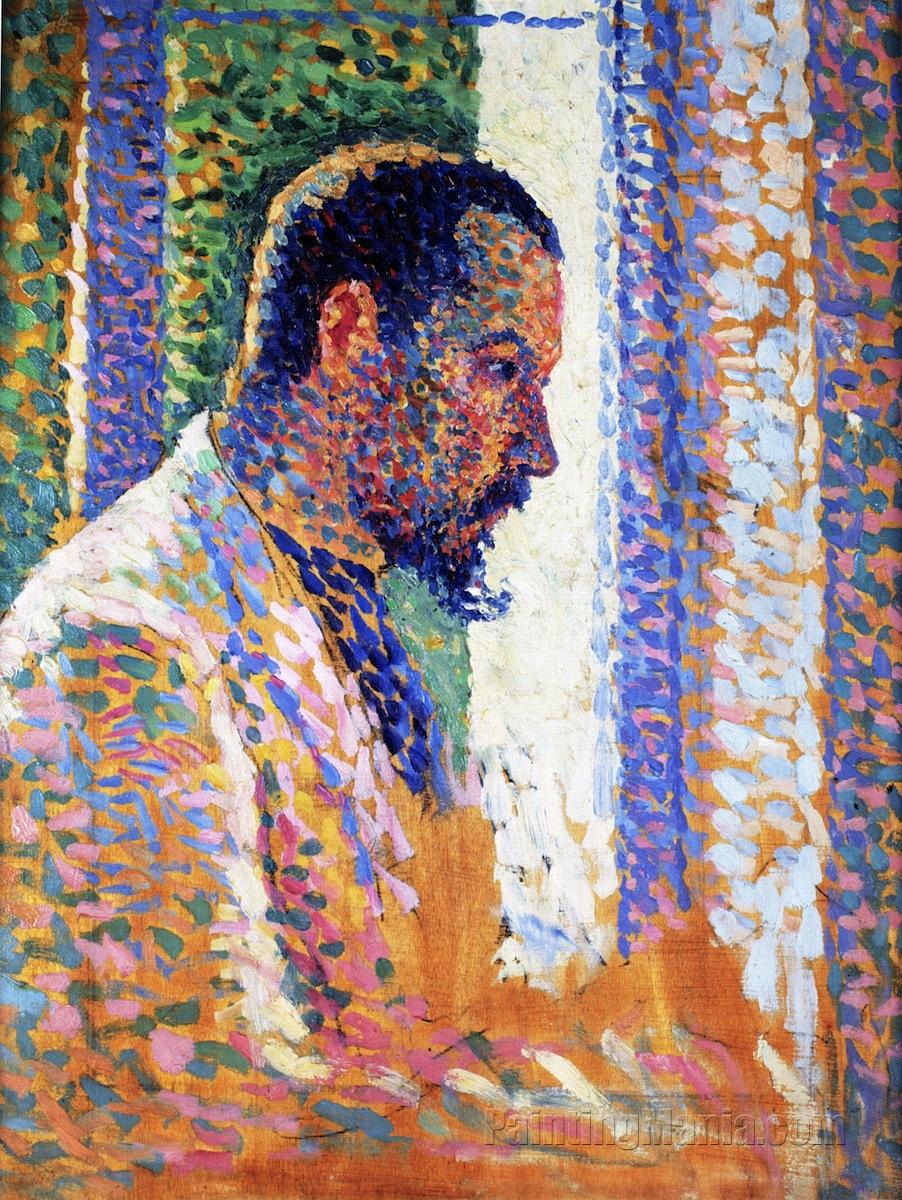 Vincent Van Gogh – Letters to Emil Bernard.
Vincent Van Gogh – Letters to Emil Bernard.
[Arles, second half of June 1888 r.]
Dear colleague Bernard8,
I am more and more convinced, that the pictures, which should be painted, so that contemporary painting becomes completely itself and rises to a level corresponding to serene peaks, what Greek sculptors achieved, German musicians and French novelists - go through the strength of one, an isolated man. So there will probably be images created by teams of people, coming together for the fulfillment of a common idea.
One, for example, has the ability to combine colors wonderfully, and he lacks ideas.
Another one has a plethora of new concepts again, shocking or enchanting, but he cannot express them sufficiently eloquently with his careful and limited palette.
The lack of a community of artists is deeply regrettable, who criticize each other, dull, although fortunately they cannot annihilate each other.
You will, that all this reasoning is trivial. So be it! But the thing - the emergence of some Renaissance - this thing, crazy, is not a cliche.
Now a technical question. In the next letter, tell me, what do you think: I'll just put black and white, those that the merchant sells to us, go ahead on the pallet and i will use them like this, what are the. Then - take note, that I am talking about simplifying the color like the Japanese - when I see a gentleman dressed in black in a green park with pink paths, who is a judge by profession (Arab Jew in Tartarinic Daudet calls this venerable official the Judge of the Peace), reading "Courier”. Above it and above the park, a sky of pure cobalt.
Why not then paint the room with ordinary ivory black, and the newspaper with plain raw white. After all, the Japanese rejects reflexes, places flat patches of color next to each other and its characteristic outline is defined by movement or shape. […]
At last I saw the Mediterranean Sea, you will probably swim them in front of me. I spent a week in Saintes Maries and to get there, I drove the Camargue stagecoach, with vineyards, dunes and flat areas as in the Netherlands. For that, w Saintes Maries, there were girls resembling Cimabue and Giotto, thin, simple, a bit sad and mystical. Green boats on a completely flat sandy beach, Red, blue, so cute in shape and color, that they were reminiscent of flowers. Only one man can swim in such a barge; they hardly cover the high seas. They fail, when there is no wind, and they have to go back to land again, when there is even a little too much of it.
Apparently Gauguin is still ill. I am very curious, he did something recently. I'm still doing the landscape, I enclose a sketch (see sketch of barges). I would love to see Africa too, but I don't really make plans for the future in advance. It will depend on the circumstances.
What I would like to know, this is an effect caused by a more intense blue sky. Fromentin and Gérome see the land of the South colorlessly and a whole lot of people see it that way. My God, probably - if you pick up dry sand and look at it closely; water and air viewed in this way will also be colorless. There is no blue without yellow and orange, so if you give blue, then give and yellow, and orange too, true? Can you tell me, that I am writing you the same clichés.
I shake your hand in thought
your Vincent
[ Arles, the end of July 1888 r.]
Dear colleague Bernard,
Thanks a lot for the submitted drawings. I love the plane tree alley by the sea with walking and two talking women in the foreground. I also like the woman under the apple tree, woman with an umbrella; then four drawings of naked women, especially the drawing of the girl washing herself. The effect of gray enriched with black, white, yellow, brown. That's lovely.
Ach, Rembrandt!… Regardless of all my admiration for Baudelaire, I dare to assume, especially on the basis of these poems, that he hardly knew Rembrandt at all. I invented and bought a small etching by Rembrandt here; a study of a naked man, realistic and simple. It stands leaning against a door or a pillar in a dark interior. A beam falling from above slides over a tilted face and huge red hair. This body so real and felt in its animality is like from Degas. Tell me, have you ever got a good look TFol if Inside, butchery in the Louvre? You haven't looked at it closely, and Baudelaire still a hundred times less than you. It would be a real holiday for me to be able to spend a morning with you at the Dutch gallery. All of this cannot be properly described, but standing in front of the pictures, I could show you wonders and wonders, which make, that I am not particularly impressed with primitives, and most directly.
Well you want, there is so little eccentricity in me; greek statue, Millet's peasant, dutch portrait, female nude by Courbet or Degas, each of these calm and modeled excellences makes, that many other things - both primitive, like the Japanese - it seems to me to be calligraphy. They interest me immensely, but the full thing - perfection - brings us infinity. Savoring a beautiful thing is like a sexual act - a moment of infinity.
Do you know a painter named Vermeer, who painted m. in. a very beautiful dutch lady, pregnant. The palette of this strange painter consists of blue, lemon yellow, pearl gray, black, white; strictly speaking, in his few paintings you can find all the riches of a full palette. But a compilation: lemon yellow, bright blue, pearl gray are also characteristic of him, like black, biel, gray and pinks for Velazquez.
I know, that Rembrandt and the Dutch are scattered around museums and collections and it's not the easiest thing to get a proper idea of them, if you only know the Louvre. And yet it is the French: Charles Blanc, Thor, Fromentin and others wrote about this play better than the Dutch.
These Dutch people had no imagination and fantasy at all, but they had an incredible amount of taste and knowledge of combinations. They didn't paint Christ, Lord God and various such - although there is indeed Rembrandt, but he alone (and there are relatively few biblical themes in his work). He was the only one who painted Christs exceptionally…, but with him it is nothing like the works of other religious painters - it's some kind of metaphysical magic.
This is how Rembrandt painted angels. In his self-portrait, he introduced himself as old, toothless, wrinkled, with a skull on his head. The picture is undoubtedly by nature, in the mirror. She dreams, he dreams and his brush portrays him anew, but from memory - the expression here becomes more and more restless and disturbing. She dreams, he dreams further and here is - why and how, I do not know, but similar to Socrates and Muhammad, who had their protective spirits - Rembrandt paints, except for this old man like him, the figure of an heavenly angel with a Leonardian smile.
I am showing you a painter, who dreams and paints from his imagination, at the outset, I claimed, that a distinctive feature of the Dutch is this, that they are not making up anything, that they have no imaginations or fantasies.
Could I be illogical? Not.
Rembrandt didn't think of anything - he knew this angel too, and this strange Christ - he could feel them. […]











